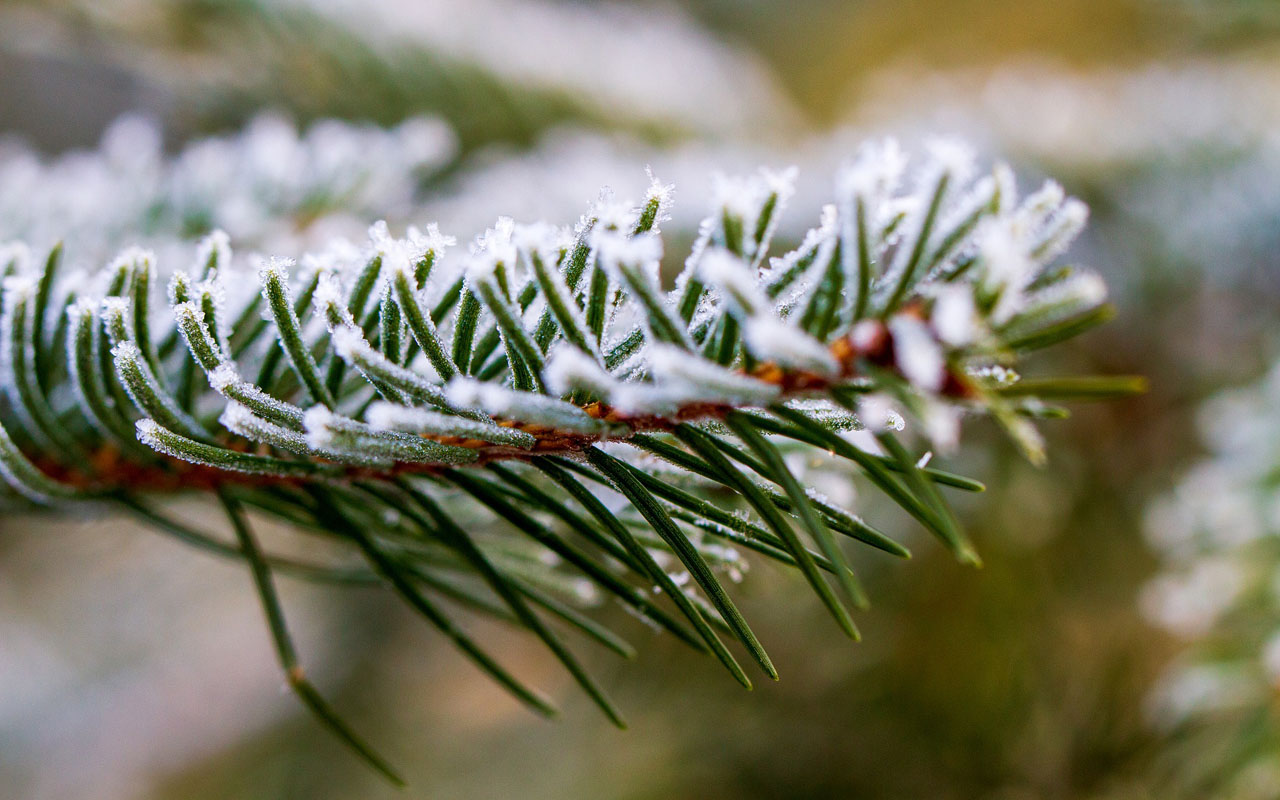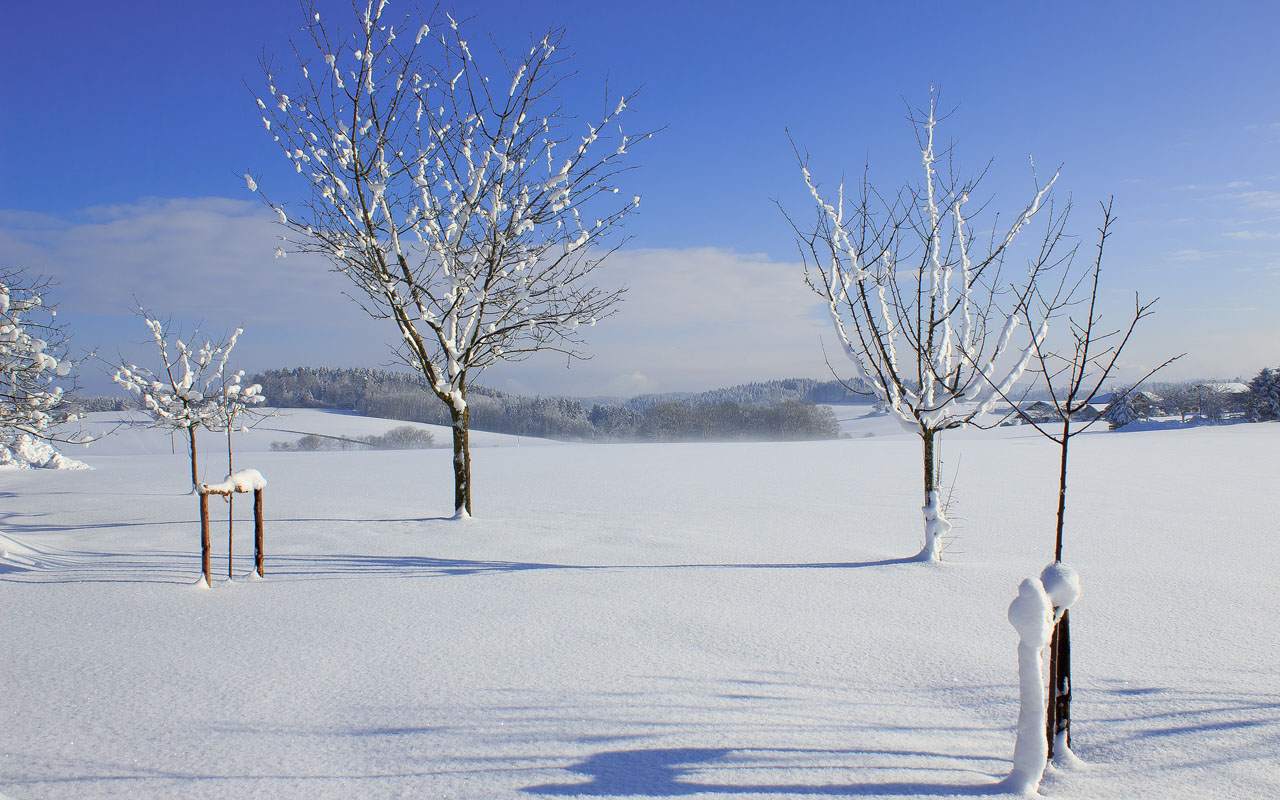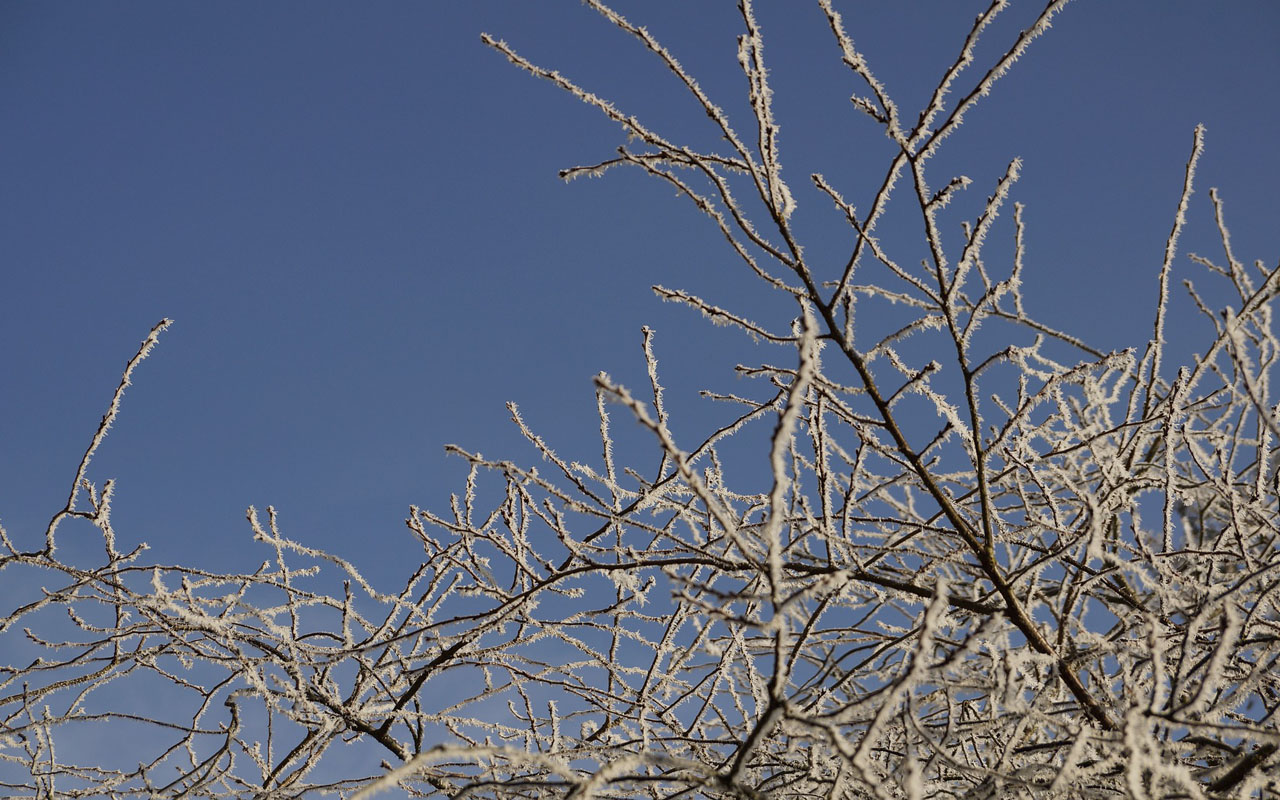
Why & How to Water Trees in Winter (Yes, Even in Northern Virginia!)
In winter, a dormant tree may look still and lifeless but inside and below ground it’s active, maintaining the chemical changes that control dormancy. Because both tree roots and a tree’s internal functions are still working during dormancy, a tree in winter needs regular water and oxygen. These FAQs will answer all of your questions about why, when and how to water trees in winter.
Can dormant trees get dehydrated?
Yes!
Although dormant trees aren’t putting out new leaves or flowers, they’re still using water and oxygen, and their internal and root systems are still at work. Tree roots never go dormant!
Dormancy in trees is triggered by the reduced sunlight hours and colder temperatures of the winter season, so watering your trees won’t disturb their dormancy or wake them up.
In fact, keeping your trees watered in fall and through the winter helps keep them healthy.

Evergreen trees can dry out from winter winds
How does winter watering help?
Dry, cold winter soil loses its natural insulating properties—the same properties that protect tree root systems. Dry soil freezes more quickly, and this kills the fine tree roots close to the surface. These are the vital roots that send water and nutrients from the soil up into the tree—a tree’s lifeline.
Dry soil also slows down decomposition, which means organic matter isn’t breaking down and enriching the soil. When this decomposition stops from lack of water, the soil organisms that do the decomposition work die as well, or move to greener pastures.
This is important, because both the decomposition of organic matter and the presence of beneficial soil organisms are what ensure long-term soil health.
But isn’t snow made of water?
While snow and ice are water, they’re not in a liquid state that tree roots can use.
So while snow may accumulate and insulate the soil surface, it isn’t adding water to the soil until it melts. Strong winter winds that blow away snow will expose the soil surface, increasing the rate of soil drying.
Snow doesn’t actually have much water content. The general rule of thumb is that it takes 10 inches of snow to melt into 1 inch of water. Heavy, wet snow has a much higher water content (it only takes 4 or 5 inches of heavy, wet snow to make one inch of water), while it may take 20 inches of dry, powdery snow to equal one inch of water. Plus, the 10-to-1 ratio also assumes that all of the snow melts without blowing away, evaporating, being shoveled, etc.
Do all trees get dehydrated in winter?

Young, recently-planted trees need extra care, including winter watering
Whether evergreen or deciduous, all trees require water throughout the year to maintain life. For newly planted and young trees, this is especially important. You’ll find that lack of water is ranked just below incorrect planting methods on the list of reasons why young trees die.
Young trees and recently planted trees have small rootballs and a limited root system. It takes some time for their root systems to expand into the soil around them. This root expansion is directly related to a tree’s above- ground growth: soil water and nutrients taken up by roots feed a tree’s growth and leaf production, which make the energy a tree uses to grow and make more roots.
Because young and newly-planted trees have limited root volume, dry soil affects them right away. Without water helping to insulate the soil, a hard freeze can kill a young tree’s fine root system and they can’t recover.
Older, established trees have extensive root systems and can often find enough water in surrounding soil areas, so they’re less affected by dry winter soil. But during dry, cold, and windy winter weather, don’t ignore them!
And coniferous trees, young or old, need water to maintain their needles throughout the winter. Unlike deciduous trees, conifer needles last more than one year. While conifer needles have evolved to use little water in winter, they still need water to keep their leaf cells alive and hydrated for photosynthesis.
How should I water my trees in winter?
The period from late fall to early spring, October to March, is when you should give your trees extra water. Of course, if it’s been raining instead of freezing and snowing, watering isn’t required.
- Water your trees when the temperature goes above 40° Fahrenheit and there’s no snow covering the ground.
- Always irrigate in the daytime, around noon, as this is when the soil is the warmest and can most easily absorb water.
- Low and slow is how you should water. You want to give the water time to infiltrate your soil, not just sit on the surface.
- If your soil has already dried out on its surface, allow plenty of time for water absorption. Dry soil tends to resist water at first, and you want water to go down a foot or more into your soil.
- You should be watering away from a tree’s trunk, where surface roots have developed. Established trees have a dripline you can use as a measurement, but for young or newly planted trees you’ll want to use the edges of their rootballs as a measurement.
- If you mulched around your young trees when you planted them—and we know you did—use that as a guide for where to water.
What method is best for winter watering?
How you water can be complicated by freezing winter weather. If you have a small garden or trees in big pots, you can fill a bucket or watering can and water that way.
If you’ve shut off your irrigation system, a garden hose is a good substitution. Set the hose at a tree’s dripline and let water slowly trickle into the soil. Remember: this is a good idea only when it’s warm enough that your hose won’t freeze! And be sure to drain your hose after use, so that the water in it doesn’t freeze.
How often should I water trees in winter?
Let the weather be your guide.
- If you have a significant rain storm that turns into snow and that snow stays on the ground, chances are good that the snow is insulating the soil that’s wet from rain and your trees are fine.
- If you have rain and then a long period of dry, cold, and windy weather, that’s when you’ll want to water your trees.
The bigger your tree, the more water it will need, so use the tree’s trunk size as a guide. 10 gallons per one inch of trunk diameter is a good rule of thumb.
Some water is good, more may not be
While watering to keep your trees healthy until spring, be sure that you don’t overwater.
If your soil drains slowly, extra water can suffocate soil by excluding the oxygen that roots need. Remember that winter temperatures, even when above freezing, are still cool enough that water evaporation into the air is happening much more slowly than it does in the growing season.
Too much water in the soil can also encourage the growth of soil fungus and bacteria that aren’t beneficial and can damage trees.
To sum up
- Mulch layered over soil surfaces acts as an insulator and a soil temperature regulator but …
- … Dry soil doesn’t insulate tree roots the way hydrated soil does
- Watering your trees in winter won’t disturb their dormancy
- Trees need water in winter because, while dormant, they’re still alive and working
- Tree roots don’t go dormant, and they are easily killed by freezing
We’re Here For Your Trees
If you aren’t sure how to assess the health of your trees in winter, or don’t know where to start to ensure their health, ask for a consultation. All we do is care for trees, and we can care for yours too!
In need of tree care services?
Give us a call at 571-244-3838 or request a quote online!
More Articles From Green Vista Tree Care








